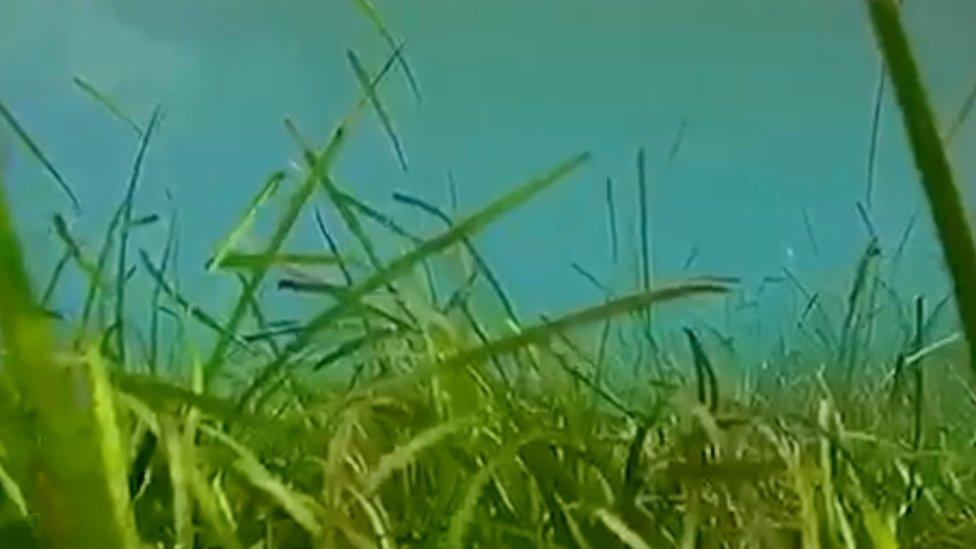Large seagrass bed discovered in Cornish bay
- Published
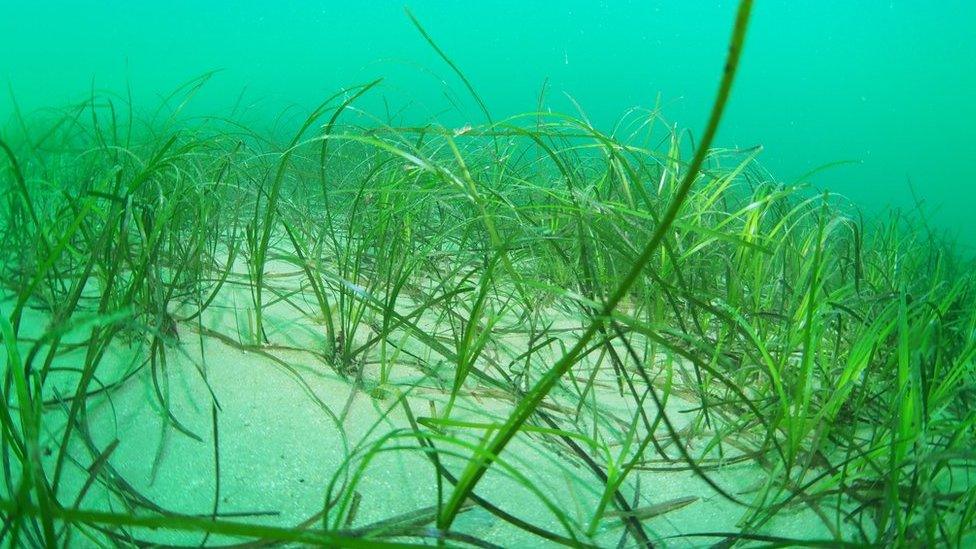
Volunteer dive surveyors found a total of 122 different species of plants and animals within the seagrass and maerl beds, proving these sites to have real biodiversity importance
St Austell Bay in Cornwall is home to one of the largest known seagrass beds in the UK, a new report has revealed.
The nearly 360 hectare (900 acres) seagrass bed was discovered using acoustic surveys, which identify areas of the sea acting as highly effective carbon stores.
The acoustic surveys focused on historically under-recorded habitats of seagrass.
The report was published by Cornwall Wildlife Trust and Natural England.
Abby Crosby, Cornwall Wildlife Trust marine conservation officer, said the discovery was "a very exciting development".

Seagrass serves as a feeding ground for a variety of marine life
Ms Crosby said: "Seagrass is one of the largest carbon sinks we have globally, despite covering only 0.1% of the ocean floor.
"It also serves as a shelter, feeding ground and nursery for a host of marine life, including vulnerable species such as seahorses, and the young of commercial fish and seafood stocks.
"Seagrass beds play an important role in helping to combat erosion of the coastline from the waves, as storms increase in their intensity due to climate change."
Listen: Abby Crosby, from Cornwall Wildlife Trust, explains why the discovery is very exciting
Volunteer dive surveyors from Cornwall Wildlife Trust's Seasearch programme found a total of 122 different species of plants and animals within the seagrass and maerl beds.
The findings come from the St Austell Bay Blue Carbon Mapping Project, part of the G7 Legacy Project for Nature Recovery announced by the Prime Minister at the G7 Summit held in Cornwall in 2021.

Follow BBC News South West on Twitter, external, Facebook, external and Instagram, external. Send your story ideas to spotlight@bbc.co.uk, external.
Related topics
- Published26 January 2023
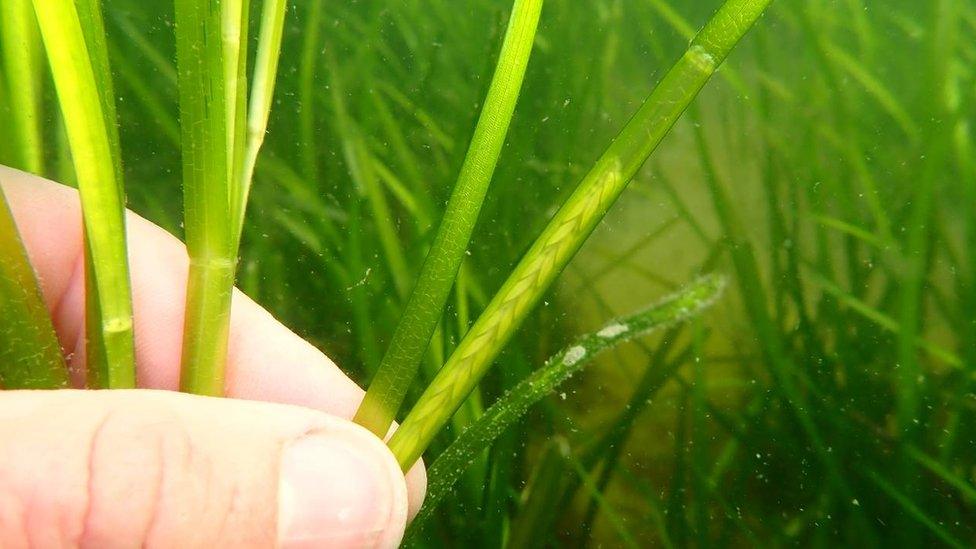
- Published28 July 2022
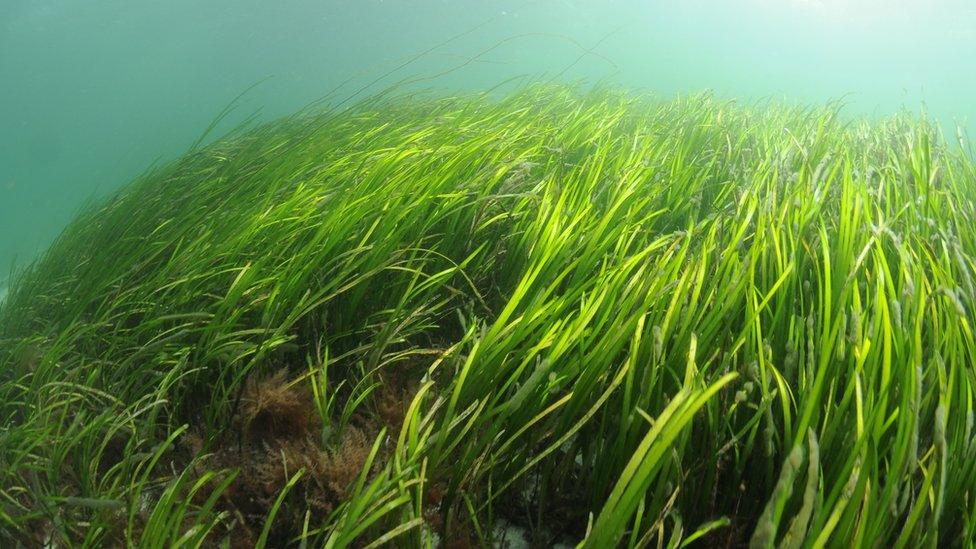
- Published7 June 2022
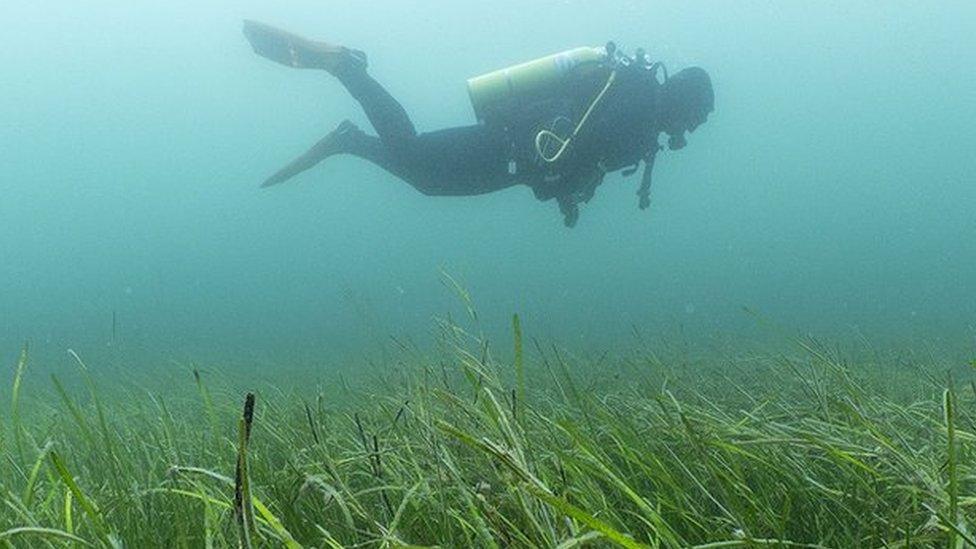
- Published16 March 2021
